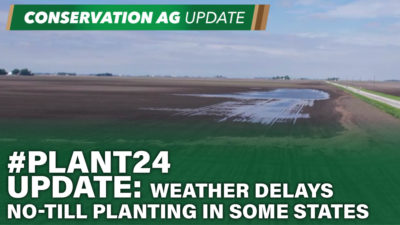For those of you who follow this blog, you know I like to point out the multiple benefits that get “bundled” together when farmers undertake soil health practices on their land.
As I’ve said before, when farmers and ranchers do things like minimize tillage, plant multi-species cover crops, practice better pasture management, incorporate livestock to graze cover crops and plant grass on highly erodible land (and graze that grass), a number of good things happen.
This includes reducing erosion; increasing organic matter; reducing surface water runoff; increasing water infiltration capacity of the soil; burning less fuel and generating fewer emissions, and sequestering more carbon dioxide in the soil — all this while producer input costs go down and yields are maintained (and hopefully, over time, increased).
I’m so high on highlighting these benefits that I’ve had a hand in helping generate a handful of reports that show at least two of these benefits (water quality and greenhouse gas reductions) can go hand in hand.
These studies show how soil health practices implemented in priority watersheds can result in improvements in water quality while at the same time resulting in significant greenhouse gas reductions through carbon sequestration and avoided emissions — in the case of the Oklahoma study listed above, reducing enough greenhouse gases to equal taking nearly 7,600 cars off the road each year while taking streams of the EPA impaired list. You can find two of these studies here:
With all of this, you can imagine how happy I was to read earlier this week that the American Farmland Trust (AFT) has released a new tool that can help folks involved in conservation work more easily identify how much of a positive impact soil health practices are having in helping mitigate climate change.
This new tool, the “Carbon Reduction Potential Evaluation Tool (CaRPE), is a web-based, interactive program that, according to AFT “allows users to quickly visualize and quantify net greenhouse gas, or GHG, emission reductions resulting from the implementation of cropland and grazing land management practices. The user can quantify the current use and impact of key regenerative practices and then estimate the potential to sequester more carbon if these practices are applied more broadly, given the specific farmland resources in a state or region.”
AFT says, “Our tool expands the utility of the data reported by COMET-Planner by layering cropland and grazing land acres data from the 2017 Census of Agriculture.
“For the first time, state policymakers, Soil & Water Conservation District planners, state and federal conservation agencies, land managers, and NGOs will be able to gather data and create maps to help them prioritize efforts for optimal climate benefits from agricultural management.”
The bottom line is that this tool will help folks more easily identify those “bundled benefits” we’ve been talking about. That to me is a very good thing.







Post a comment
Report Abusive Comment